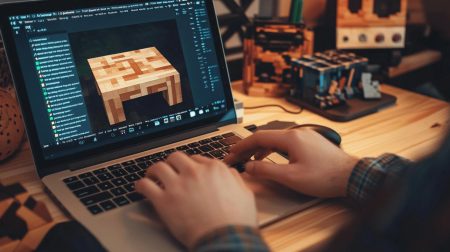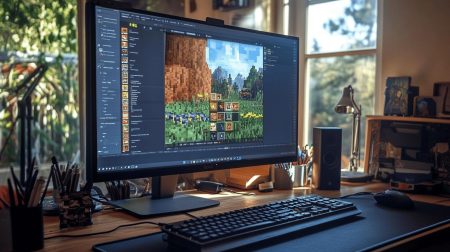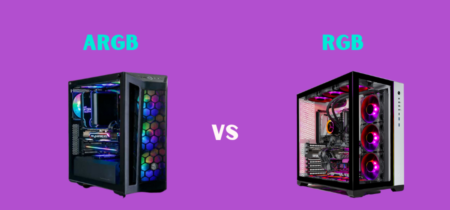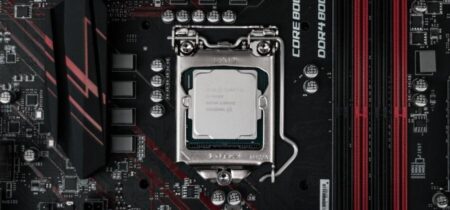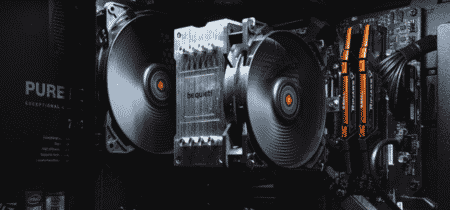GPU is an integral part of the system that is the essential requirement of high intensive tasks and advanced gaming, and if it is overheating, this is not a good signal, and if this problem is not solved on time, then there might be costly damage with the waste of time.
If your GPU is overheating, you should usually take proper steps at the right time because leaving it just like that might damage the internal core of the GPU and also cause harm to the other part of the system.
The GPU is one of the most expensive components of the computer system, and no one can afford to lose it due to overheating. That is why monitoring the temperature of the GPU is imperative, and if you are also experiencing the problem, then this article is written for you.
Also Read: CPU Suddenly Overheating
This article will properly discuss the causes of GPU overheating and how to fix it. So let’s get started.
Causes Of Overheating Of GPU
There is more than one reason for GPU overheating that may seriously affect the performance of computer and graphics, and if you are playing video or video games, you may face a lack of fps rate.
Multitasking
Multitasking is one of the main factors which may cause GPUs to overheat. If you have opened multiple programs, you are putting the load on it, and some tasks are running in the background. If you have opened programs taking too much gear, this will produce more heat in the Graphical Card.
Virus Or Malware
Yes, viruses and malware can damage the computer’s hardware and components and should not be taken lightly. Viruses and malware do not usually specifically damage the GPU but can run in the system’s background, causing an overload on the GPU and other parts of the system.
These viruses or unwanted programs keep running without the user knowing and cause a significant burden on the GPU that ultimately causes them to overheat.
Lack Of Airflow
Airflow is vital in maintaining the cooling effect and keeping the temperature standard. Insufficient Airflow can cause the overheating of the GPU and the other components of the system’s hardware.
For instance, if you put your computer in a manner where the fan can’t walk through the air out, how can it exhaust the inner temperature of the laptop towards the outside?
Here’s the article if you are not sure that you need a CPU cooler or not?
Not Cleaning GPU
It is one of the most common factors we have found so far that there are dust particles inside the case of the computer, and it is essential to clean the GPU and the hardware computers to avoid any loss. The dust can not only restrict the fresh air flow.
Still, it can also accumulate on the heat-sensitive component and act as the thermal insulator layer trapping the heat inside the element. Also, These particles can damage the propellers of the fan. After that, the fan may not be able to create enough thrust to pull out the heating effect of the computer to the outside of the system.
Thermal Paste
Another reason and the reasons mentioned above are the thermal paste. The high-quality thermal paste of the GPU keeps the heat sink working correctly and maintains the system’s internal temperature. If the thermal paste has gotten older and is not doing the job properly, it might cause GPU overheating.
How To Identify If The GPU Is Overheating?
There are various signs to identify if your GPU is overheating. Those symptoms will be discussed below.
Monitoring Software
There is multiple monitoring software available on online stores where you can quickly check the heating temperature of your GPU on your screen in terms of percentage or degrees.
Generally, below 80 to 90 degrees Celsius is ok for the cooling system. In contrast, AMD machines can maintain more than this temperature, and the fan’s speed will increase, which will be unpleasant for the ears.
Failure Of Graphic Card
If a constant pop-up window opens on your system screen with the parameters that your graphic card or drivers are failing, you should check the GPU temperature and check for an update, if any is available.
Shut Down The Computer Unexpectedly
If your computer is unexpectedly shut down, your overheating GPU is a matter of concern. You should check the temperature of your GPU before restarting your computer; in this case, do not immediately restart your computer.
Appearing Blue Screen
The appearance of a full blue screen is another factor many gamers have reported after a long gaming session. Even after lowering the temperature, the problems are still going on, so this is another factor to consider.
Having the GPU artifacting is also the sign of GPU overheating.
How To Fix Graphics Card Overheating?
As we have seen many reasons for overheating the GPU, then to fix this issue, we first have to find those parameters that are causing the GPU to be overheating. One of the main things is identifying those programs or games that are putting more load on the GPU.
If we have found them, we can lower the settings according to our graphic card, which will give better output with smooth fps.
Maintenance
Maintenance is one of the most critical parameters to be emphasized because dust particles can cause the rising of internal temperature or may become a hurdle in adequately running the fan to control the speed that can maintain the temperature of the hardware component of the computer, especially GPU.
You will need a screwdriver, air blower, light brush, and alcohol to clean the internal part of the computer.
- Open the case of the PC with the help of a screwdriver.
- Take the PC to a well-ventilated area.
- Now apply the air blower where the dust is accumulated.
- Clean the sensitive parts that have wires and thin cables with the help of a light brush.
- Apply the thermal paste, if necessary.
- To apply thermal paste, remove the cover and clean the surface with alcohol and a clean cloth.
- Now use a tiny drop of thermal paste at the center.
- Cover the case of the PC and start the computer following maximum caution.
Check our separate post for What Should Be the Normal CPU Temperature While Gaming?
Place Your Computer Where It Can Take Maximum Airflow
Lack of Airflow always raises your laptop’s internal temperature, so to fix this issue, you should prioritize this to keep your system where it can experience maximum Airflow. You can keep the PC in a well-ventilated and relaxed place to have total Airflow.
Resetting Overclocking Speed At Its Default Setting
Overclocking the speed of the GPU is another factor in increasing your GPU’s temperature. Clocking speed produces more heat, affecting the fans to run faster and making more noise due to the increase in heating effect.
Avoidance From Multitasking
Try to avoid multitasking while running heavy games. It puts more load on the GPU, which will cause the production of more and more heat. If you have completed work on the specific program, immediately close it instead of minimizing it. The same goes for the Tabs of the browser.
If you are not using particular tabs, make sure you complete them as they can consume a significant amount of resources, causing a burden on the system.
The task manager can turn off several tasks running in the background. Also, stop the job from opening at the start of the system as it consumes many resources. You can do this by following these steps:
- Press alt + ctrl + del simultaneously to open the task manager.
- It will open the task manager, go to processes and arrange the task in descending order of most consuming resources.
- Now end the process one by one that you think is not open. Make sure to avoid the system task, as closing them might cause trouble in your PC.
- Now, go to the startup tab in the task manager and disable all the scheduled tasks to open on startup automatically.
Replace Thermal Paste
Replacing thermal paste is another hack against the overheating of the GPU. This paste resists heat and provides a cooling sink to maintain the temperature of the GPU. You can apply the thermal paste easily by the steps mentioned above. Make sure that you use the high-quality thermal paste from the certified brands that are known to provide the best products.
Here’s the guide to get away from the GPU voltage limit reached warning.
Conclusion
GPU overheating is not a problem that can be taken lightly, but you should take immediate steps to solve the issue; otherwise, you risk the GPU’s failure and other components’ failure. Various factors can cause the GPU to overheat. These factors include overclocking, uncleaned GPU, expired thermal paste, etc.
You can know if your GPU is overheating with the help of monitoring software. Other signs of GPU overheating include lag, the shutdown of the computer without any visible reason, etc.
There are various ways to solve the problem, and you should follow all the steps to solve the problem. Cleaning is the most obvious solution and fixes most of the issues. You can also try upgrading the cooler, reapplying thermal paste, or changing the environment and working conditions of the system.






